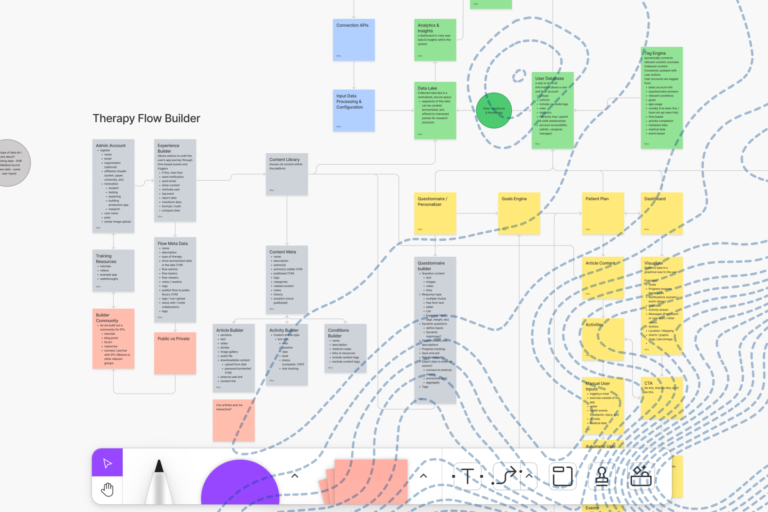“The world hates change, yet it is the only thing that has brought progress.”
The quote from world-renowned inventor and businessman Charles Kettering captures the frustration so many senior leaders have encountered while championing change within their organizations. Resistance can often feel like the largest barrier to organizational change, especially to the leaders of the initiative—that’s why growth-focused leaders who recognize the importance of prioritizing their people look to change management methodology.
What is change management?
Change management is the umbrella term for a wide range of approaches that aim to support or prepare stakeholders for organizational transformations. Often, organizational change is focused on transforming company structure, business strategy, technology, or culture; all elements that impact people. Digital transformations, for instance, change far more than the tech stack: they also reshape the atmosphere and perception of people’s jobs, and people are sensitive to even the slightest cultural shift.
Change management aims to bridge the gap between transformation objectives and supporting your people. After all, organizational goals can’t be met if relevant stakeholders aren’t on board.
One way to ensure that your people adjust well is by facilitating an internal buy-in strategy. Internal buy-in is the method by which leaders directly involve stakeholders in the organizational decision-making process. Also known as stakeholder buy-in, this method allows the people who will feel the brunt of the change to influence new processes and further chances of success.
Co-design is an internal buy-in method that allows the end-user to inform design decisions. The participatory design approach helps to avoid bad UX design and create workflows that the user would want and expect.
” When you involve the folks who will end up using the software you’re building in its creation, instead of just building what you think they need, a few wonderful things happen.
First, you learn a lot about the way they’re actually doing their jobs. Their pain points, their clever workarounds, the way stuff really gets done on the ground.
Second, when you design with your users, rather than for them, they take pride in their role in the process. They’re more likely to use it, and use it “correctly,” because they had a role in creating it. They’re more likely to evangelize its use to new coworkers. And they just generally feel valued as employees, because they’re being asked, not told. ”
– Len Damico | Head of Design, Arcweb Technologies
It’s a lot to expect change management or product leaders to think from the perspective of the end-user and anticipate their steps; the solution is to let them do it for you, by including them in the design process.
Here’s why change management and tools like the co-design method need to be at the heart of your digital transformation strategy.
Why change management must be at the foundation of digital transformation
Digital transformations are less about the technology and more about the people. Effective change management methodology ensures that any digital adoption techniques are centered around the right people. Not only can effective change management lead to a stronger process, but stakeholders will be more likely to support the initiative.
Here are three digital transformation factors that will influence your change management strategy:
Type of Stakeholder
Identify what type of stakeholders will be affected by the organizational changes. Are they internal or external? Internal stakeholders generally include owners, managers, employees, and board members or trustees. External stakeholders can include customers, relative community members, and vendors that provide for the business.
If your stakeholder group consists mostly of employees, you can plan to engage with your staff as a regular part of your design process. If you are interested in focusing on customers, however, this can be a bit more challenging. Experiment with different ways to reach external stakeholders: one-on-one interviews, focus groups, and participatory design events. The better you engage with them now, the better they will align with the new changes later.
Nature of the Transformation Initiative
How you support your stakeholders will depend heavily on the type of organizational change in progress. If you’re starting a digital transformation initiative, it’s important to get a comprehensive understanding of the workflows that currently exist. Ask yourself questions about how digital changes might affect the status quo:
- Which processes are working and which aren’t?
- Are there any processes acting as a barrier to your end-goals that need to be uprooted?
- Are you looking into transforming any long-standing or otherwise coveted systems?
- Look at each different type of stakeholder, will workloads increase? Decrease? Will user-journeys shrink or potentially disappear?
While minimized workloads might sound ideal to growth-focused leaders, automating a system that was previously performed by an employee can have an impact on employee morale or potentially lose out on institutional expertise that has been accumulated over years.
Digital transformation goals
Your ideal digital transformation vision will need to guide your change management strategy. When you outline your KPIs, keep in mind how your stakeholder group will play a role in measuring success. Getting a big picture prior to the start of your digital transformation will help you with comparisons later.
If one of your KPIs directly involves the stakeholder, you should determine how you’re going to identify if that goal was met. Who owns this measurement? Is it reliable? Does it impact other parts of the business or other parts of your stakeholders’ responsibilities?
Engaging internal stakeholders for buy-in using co-design
The first step is to find the relevant stakeholders. The right stakeholder group might seem obvious, but there could be individuals you hadn’t considered. Have you created a representative and diverse group? Consider interviewing other experts at the organization to learn about the employees or customers they manage.
Once you’ve classified your group, inform stakeholders of your co-design plan. You might not need to use that exact terminology, but making your intentions clear will help them feel involved rather than evaluated.
Next, get to know your stakeholder group well and identify the most effective co-design strategies to engage with your people. Here are a few co-design strategies we love and have found very effective:
Surveying
Construct a survey that addresses the questions you have about user journeys. Focus specifically on workflows that you plan to modify and ask participants for honest feedback. Observations that seem to appear consistently throughout survey results are likely the ones that will inform the transformation strategy.
Participatory Design
Identify a representative group of end-users to join together and actively comment on your designs and suggest changes that will help the product meet their needs.
Last year, our UX Design team hosted an event for four nonprofits who needed to increase conversion rates (i.e. signing up more volunteers, generating more donations, etc). We gathered participants over Zoom and broke out into groups that evaluated the nonprofit’s digital experiences. Each organization went home with valuable feedback and actionable insights to improve their web experiences.
Just Ask
Recently, I received an email from the CEO of Biteable, a digital product we use to create video content. Brent Chudoba plainly asked me, “What can we do better?”.
I set up an interview and had a brief conversation with him, where he learned more about why I’m using the product, how I’m using the product, what I liked, what I didn’t like, and how they could improve. He told me that those meetings are invaluable because they generate concrete and direct feedback for their product team: co-design doesn’t have to be rocket science.
Here are some more co-design examples for the more technical, UX-focused strategies.
Next steps for establishing organizational change
Don’t become overly attached to your original digital transformation strategy. If stakeholders are showing resistance, it’s probably a sign that the digital transformation journey might need to take a detour. Remember: The entire purpose of an internal buy-in strategy is to learn the weaknesses of your strategy and to adjust accordingly.
Applying the insights you get from co-designing will lead to more inclusive and credible solutions for the organization and will also help to foster stronger support for the overall transformation initiative.
Performing a cohesive digital transformation is possible with change management and co-design methods can help you get there. When Arcweb performs digital transformations, we center our efforts around communication and collaboration with our clients and stakeholders.
Are you trying to become a more growth-focused and customer-centric organization? Reach out to our digital transformation experts to learn more about what your company might need to succeed.



